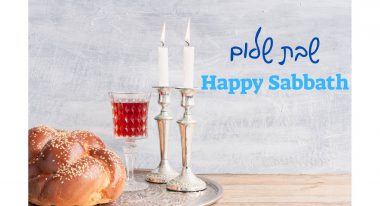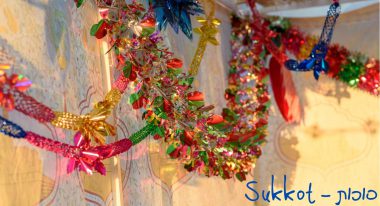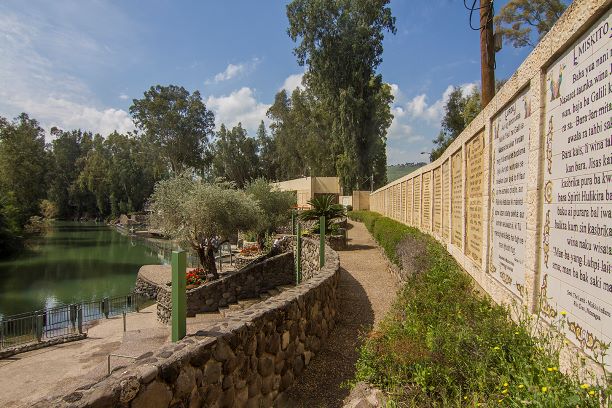
Do you want to learn an African language, but don’t know how to start?
Your reply is probably negative, and we have no such plans at Yardenit, but last September we were thrilled to add the African language Wolof to the many languages and dialects represented in “The Wall of New Life” that surrounds the Yardenit site. The Wall of New Life quotes the story of the baptism of Jesus by John (Mark 1: 9-11) in a wide variety of languages, and the panel in Wolof is the 107th panel to be added.
At the inauguration of the new panel at the beginning of September, 250 Catholic pilgrims from Senegal participated. This distinguished Senegalese delegation visited the Holy Land under the leadership of Monseigneur Bishop Paul Abel Mamba. It should be noted that 96% of Senegal’s population is Muslim, but residents of the country enjoy freedom of religion and Senegalese Christians celebrate their faith undisturbed.
The Wolof language
Wolof, the language of the Wolof people, is a branch of the Niger-Congo language family, spoken in Senegal, Gambia, and Mauritania in West Africa, south of the Sahara Desert. It is the mother tongue of about 40% of Senegalese residents. In the past it was written in Arabic letters (traces of French and Arabic are evident in the vocabulary), and in 1974 it officially became written in Latin script.
According to the Joshua Project, an American Evangelical organization that deals with ethno-linguistic classification, Senegal has 6 million Wolof speakers; half a million speakers reside in other countries, and there are another 13 million people who speak Wolof as a secondary language.
The New Testament was first translated into Wolof at the end of the 19th century, and today there are several versions.
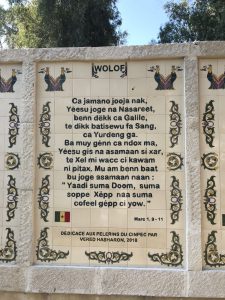
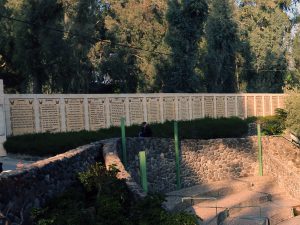
“The Wall of New Life”
The “Wall of New Life” welcomes visitors at the entrance to Yardenit and guides them all the way to the baptismal pools. The text is uniform, but each panel represents a different language / community that donated it. As such, the wall reflects the great variety of cultures represented by our guests who come to be baptized here.
“The Wall of New Life” is named in accordance with Romans 6:4:
“Therefore we were buried with Him through baptism into death, that just as Christ raised from the dead by the glory of the Father, even so we should walk in newness of life.”
As mentioned, the panel in Wolof is the 107th. Tongues related to Wolof also represented in the “Wall of New Life” are Igbo, Yoruba, Kiswahili.





